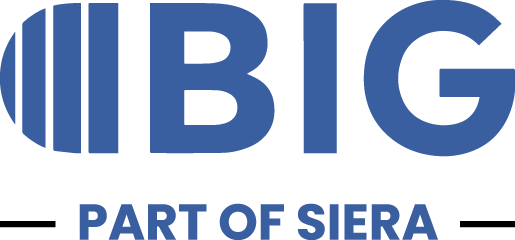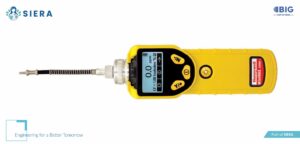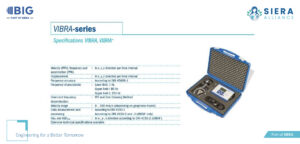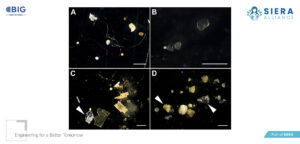Sustainability has long been more than just a trend—it is a guiding principle of modern procurement. Today, public institutions no longer focus solely on price, but increasingly on ecological, social, and economic impact.
Prof. Burmeier Ingenieurgesellschaft mbH—a member of the SIERA Alliance based in Hanover—is actively shaping this development. As part of the SIERA Alliance, the company stands for future-oriented environmental engineering—in line with its brand promise:
Engineering for a Better Tomorrow.
What does sustainable procurement mean?
Sustainable procurement means systematically integrating environmental, social, and economic criteria into all phases of the procurement process. The aim is to minimize negative impacts on the environment and society while acting in an economically sustainable manner.
The three pillars of sustainable procurement:
- 🌱 Ecological criteria: Energy efficiency, resource conservation, recyclability, CO₂ reduction.
- 🤝 Social criteria: Fair working conditions, transparency in the supply chain, promotion of regional suppliers.
- 💼 Economic criteria: Life cycle costs instead of pure acquisition costs.
This combination makes sustainable procurement a key instrument for climate protection, promoting innovation, and long-term value creation.
Integration of sustainability criteria
Sustainability aspects can be incorporated into public tenders at several levels:
- Service description:
- Definition of minimum environmental requirements (e.g., energy efficiency classes, recycling content).
- Commitment to using environmentally friendly materials.
- Suitability and award criteria:
- Verification of environmental management systems (e.g., ISO 14001).
- Assessment of carbon footprints or regional value creation.
- Life cycle costs instead of purchase price:
- Consideration of operating, maintenance, and disposal costs.
- Identification of the most economical and sustainable offer in the long term.
| Evaluation Factor | Description | Sustainable Benefits |
| Acquisition Costs | One-time costs upon purchase | Short-term comparison |
| Life cycle costs (LCC) | Total costs including operation, maintenance, disposal | Long-term economic efficiency |
| Eco-label | Proof of ecological quality (e.g., Blue Angel) | Promoting sustainable innovations |
According to Section 67 of the German Regulation on the Award of Public Contracts (VgV, 2016), the calculation of life cycle costs for energy-related supplies and services is mandatory—an important step for sustainable procurement in Europe.
National Guidelines and Best Practices
In Germany, the Competence Center for Sustainable Procurement (KNB) at the Procurement Office of the Federal Ministry of the Interior offers practical information, training, and legal guidance.
An example is provided by Hamburg:
The Guide to Environmentally Responsible Procurement (binding since 2016, revised in 2019) contains a catalog of criteria with ecological standards and a negative list of prohibited products.
At the European level, countries such as Denmark are also demonstrating that sustainability can be established as a factor relevant to procurement in almost all tenders—a model for Germany.
Significance for engineering and the environment
For engineering companies such as Prof. Burmeier Ingenieurgesellschaft mbH, sustainable procurement is more than just a legal obligation—it is a driver of innovation.
In environmental and engineering, this means specifically:
- Use of sustainable building materials and low-emission materials.
- Planning energy-efficient and resource-saving infrastructures.
- Integration of circular economy and waste prevention.
- Use of digital tools for life cycle analyses and resource optimization.
Whether in hydraulic engineering, infrastructure planning, or environmental projects, Prof. Burmeier Ingenieurgesellschaft mbH combines technical expertise with ecological responsibility.
Sustainability is not an add-on here, but an integral part of every project—a true example of Engineering for a Better Tomorrow.
Challenges and approaches to solutions
The implementation of sustainable procurement also presents challenges:
- Complex valuation methods require sound data and transparent models.
- Many contracting authorities require training in the area of sustainability.
- Different standards at federal, state, and EU level make comparison difficult.
Benefits of sustainable procurement
🌱 Environmental benefits:
- Reduction of CO₂ emissions and pollutants.
- Conservation of natural resources through recycling and energy efficiency.
- Contribution to climate neutrality in public institutions.
💼 Economic advantages:
- Lower operating costs thanks to durable products.
- Lower disposal costs.
- Strengthening regional value chains.
🤝 Social benefits:
- Promotion of fair working conditions.
- More transparency in the supply chain.
- Positive image for clients and companies.
Rechtliche Rahmenbedingungen
The legal basis for sustainable procurement in Germany and Europe includes:
- Section 67 VgV – Calculation of life cycle costs.
- EU Directive 2014/24/EU – Sustainability as a component of public procurement.
- Country-specific guidelines (e.g., Hamburg, Baden-Württemberg).
Institutionen wie ENGAGEMENT GLOBAL GmbH und das Umweltbundesamt unterstützen Kommunen mit praxisnahen Tools und Informationsportalen.
Praxisbeispiel: Nachhaltige Ingenieurpraxis in Hannover
In the Hanover region, Prof. Burmeier Ingenieurgesellschaft mbH – a member of the SIERA Alliance – is consistently committed to sustainability in infrastructure, environmental, and hydraulic engineering projects:
- Use of low-emission materials.
- Optimized construction site logistics to reduce transport distances.
- Cooperation with regional partners for short supply chains.
- Integration of renewable energies into municipal projects.
These measures lead to measurable results – from reduced emissions to greater resource efficiency.
FAQ
What is sustainable procurement?
The integration of environmental, social, and economic aspects into all phases of a procurement process—from planning to disposal.
Why is it important?
It protects resources, promotes fair working conditions, and creates long-term economic efficiency.
What advantages does it offer engineering companies?
Greater innovation, competitiveness, and reputation—while supporting climate and environmental goals.
How does Prof. Burmeier Ingenieurgesellschaft mbH implement sustainable procurement?
Through holistic assessment approaches and the targeted use of sustainable materials and resources.
Conclusion
Sustainable procurement is not a short-term trend—it is a crucial step toward climate protection, resource efficiency, and social responsibility.
Prof. Burmeier Ingenieurgesellschaft mbH—a member of the SIERA Alliance—demonstrates that engineering and sustainability can work in perfect harmony when innovation, responsibility, and practical knowledge come together.
👉 Learn more about sustainable projects and environmental solutions at:
www.burmeier-ingenieure.de
Together we shape the future – Engineering for a Better Tomorrow.







